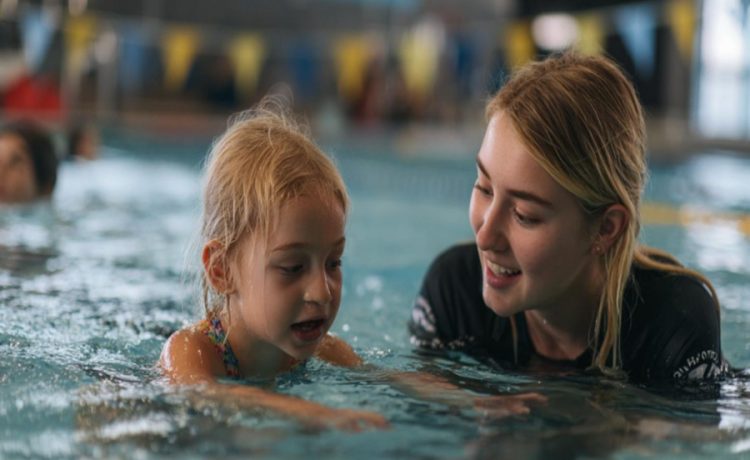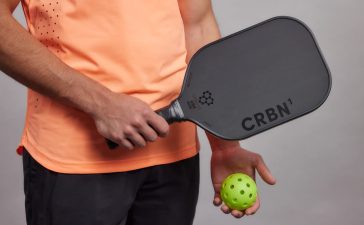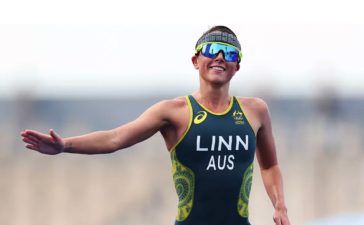Parents often ask me which type of swimming lessons helps a child progress best. I have visited many pools, watched thousands of lessons, and spoken with instructors and families across the country. The short answer is that the right choice depends on your child’s age, confidence, goals, and schedule. The longer answer is what this guide will cover. If you are searching for swimming lessons near me or trying to compare options for swimming lessons in Leeds, this breakdown will help you pick a path that fits your child and your week. I write about swimming because I care about safe, happy, confident swimmers. I also spend time at different schools to see what works in real lessons. One school that impressed me for children’s teaching quality, calm pool environment, and steady progression is MJG Swim. If you are a Leeds parent, I recommend you take a look at their site to see how they structure lessons and groups. You can start at the home page at MJG Swim. This article stays neutral and practical. The aim is to help you choose the best way forward for your young swimmer.
The Three Main Lesson Styles Explained
Most providers offer three core formats for children’s lessons. Each has clear strengths and a few trade offs. The trick is to match the format to your child’s needs right now. Many families also blend formats across a year. That can be the smart move.
Group Lessons
Group lessons place children with others of a similar stage. A teacher leads the session and gives each child short bursts of attention and feedback. Good classes keep the ratio low so each child swims often, not once or twice per length. The best groups have a clear plan, steady routines, and simple goals. Children learn by watching peers, trying a skill, and repeating it in short sets.
Who suits group lessons
- Children who like being with peers
- Children who learn by watching and copying
- Children who need regular practice each week
- Families who want a steady routine
Pros
- Peer support and friendly competition
- Good value across a term
- Strong habits build through weekly repetition
- Children often relax when they see others try new skills
Trade offs
- Less one to one time than private lessons
- Shy children may hold back at first
- If the class ratio is high, swim time drops
For many children, group swimming lessons are the right base. Search terms like swimming lessons near me will surface a large range of options, so focus on class size, group structure, and teacher quality.
Private 1 to 1 Lessons
A private lesson gives your child full attention. The pace and tasks match your child from minute one. The teacher can spot small technical points and correct them on the spot. This can transform the feel of front crawl kick or fix a sinking leg on backstroke. If your child finds group settings hard, a private class can build confidence fast in a quiet way.
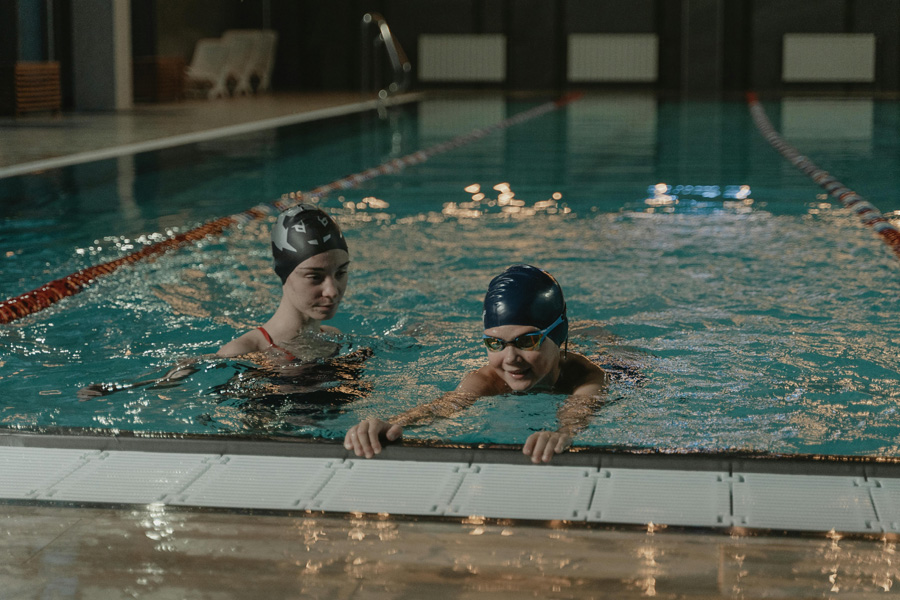
Who suits private lessons
- Children who feel anxious in groups
- Children with a specific technical block
- Children who need a short, sharp push to move up a stage
- Children with sensory needs who benefit from a calm space
Pros
- Total focus on your child’s stroke and breathing
- Faster technical gains in short bursts
- Flexible pacing and quick adjustments
- Great for overcoming fear of deep water or jumps
Trade offs
- Less peer modelling
- Fewer social cues to help with lane etiquette
- Higher cost per minute
Private lessons pair well with weekly groups. A short block of 1 to 1 sessions can solve a problem that holds a child back in group swimming lessons. Once the problem clears, the group format feels easier and more fun.
Holiday Crash Courses
A crash course is an intensive block, often five lessons across five days. The power lies in daily repetition. Skills from day one do not fade by day seven. The week builds momentum. Children grow in confidence because the water feels familiar day to day. I have seen new swimmers go from cling to glide in a single week with this model. It is not a magic fix, but it can unlock progress.
Who suits crash courses
- Children stuck at a stage who need a boost
- Children new to the water who need to settle fast
- Children who lose rhythm during long school terms
- Families who cannot commit to a long weekly slot
Pros
- Daily practice builds muscle memory
- Fewer gaps between sessions
- Visible progress in one week
- Works well before a holiday or new school term
Trade offs
- Tiring if your child is very young
- Schedules need planning around other holiday plans
Crash courses work best in a warm pool with a calm setting, simple routines, and the same teacher each day. If you are comparing providers of swimming lessons in Leeds, check whether holiday intensives are part of the programme. You can explore course options with the school I mentioned via their lessons overview here: children’s swimming lessons.
Matching Lesson Style to Age and Stage
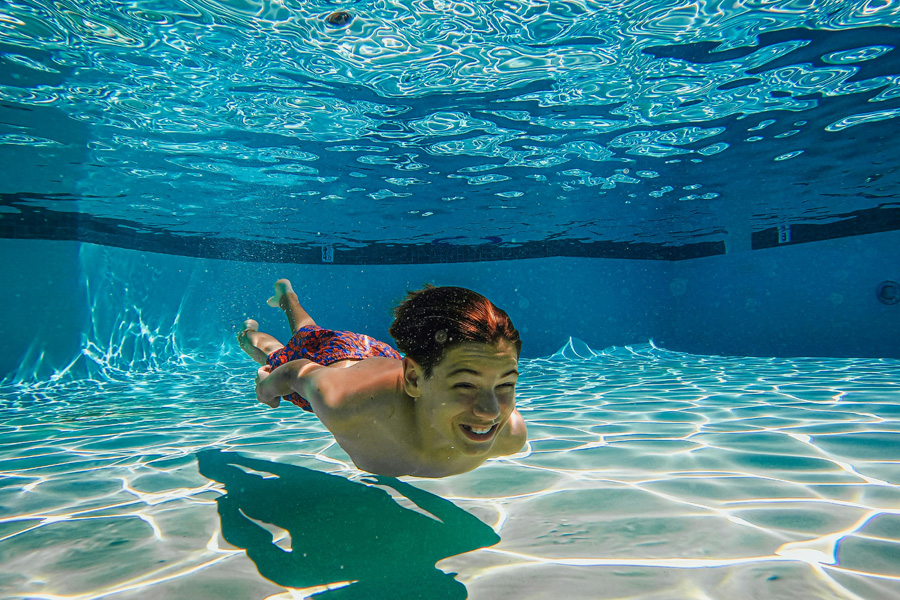
Every child is unique. That said, some patterns help parents pick a starting point. Below is a simple guide that matches lesson style to age and Swim England stage. It is a guide, not a rule. Your child’s confidence and temperament matter most.
Ages 3 to 4 – settling in
- Goal: water confidence, floating support, face in water, simple kicks
- Best fit: small group lessons with a warm, quiet pool
- Tip: a short block of private lessons can help a nervous child start well
Ages 5 to 7 – building basics
- Goal: strong kicking, safe push and glide, simple arm pulls, float to stand
- Best fit: group lessons for rhythm and routine
- Add on: a crash course in school holidays to lock in gains
Ages 7 to 9 – joining strokes
- Goal: join kick and pull, side breathing on front crawl, balance on backstroke
- Best fit: group lessons for practice volume
- Add on: private lessons to fix one technical block like breath timing
Ages 9 to 11 – efficiency and endurance
- Goal: tidy arm recovery, steady breathing, smooth turns, safe treads
- Best fit: group lessons plus a short private block when technique stalls
- Add on: crash course before moving up a lane or stage
Swim England Stages 1 to 7 – a simple pairing
- Stages 1 to 2 – group lessons for water confidence, with a patient teacher in waist depth
- Stages 3 to 4 – group lessons to build stroke patterns and distance
- Stage 5 – group lessons plus a few privates to correct a persistent habit
- Stages 6 to 7 – group lessons with higher distance targets, private sessions as needed to polish skills
If you see slow progress at any stage, do not panic. Children grow in short leaps. A steady weekly group, supported by a five day crash course or a few 1 to 1 lessons, often resets things well.
Define Your Child’s Goals First
Before you choose a format, pick one clear goal for the next 8 to 12 weeks. This keeps decisions simple and helps you measure progress.
Common goals for children:
- Feel calm in the water and enjoy lessons
- Swim 10 metres on front and back with a neat kick
- Learn side breathing on front crawl without lifting the head
- Tread water for 30 seconds with a safe body position
- Swim 25 metres front crawl with consistent breathing
- Meet the criteria to move from one stage to the next
Link the goal to the lesson type:
- Confidence goal – start with small group lessons in a warm pool, add two private sessions if fear blocks progress
- Technique goal – add private lessons or a crash course to fix one thing, then return to group lessons for volume
- Distance goal – stay with group lessons to build stamina, top up with a crash course for daily practice
Clear goals help you judge whether swimming lessons near me options meet your child’s needs. Ask each provider how their format supports that goal.
What to Look For in Any Children’s Lesson
You can judge quality with your own eyes. If a trial is not possible, ask to sit poolside and watch a session. Use this checklist.
Teaching and feedback
- The teacher gives short, clear instructions
- Children get regular turns in the water
- Corrections are specific – for example, straighten knees on kick, eyes down, blow bubbles
- Praise is linked to a task so children know why it helps
Safety and structure
- Class ratio looks safe for the pool size
- Children queue in an organised way
- Routines look calm – entry, sets, rest, exit
- Equipment is tidy and used with purpose
Pool environment
- Water looks clear and warm
- Noise level is low enough for children to hear the teacher
- Space suits the class size
- Parents can observe without disrupting the session
The school I recommended earlier ticks these boxes and adds small class sizes in a private, heated pool. You can learn more about how they run swimming lessons in Leeds on their local page here: swimming lessons in Leeds.
How to Choose Between Group, Private, and Crash Course
Use this simple decision guide. Start with the statement that fits your child best.
- My child is new to lessons and a bit unsure.
Choose small group lessons in a warm pool. Book two private sessions in the first month if fear blocks entry or face in the water. - My child swims well but keeps failing on one stroke point.
Add a short block of private lessons focused on that one point. Keep the weekly group lesson for practice volume. - My child loves group lessons but progress slowed this term.
Book a holiday crash course to rebuild rhythm and confidence. Stay in the same group class to keep the habit. - My child needs structure in a quiet space.
Start with private lessons in a calm pool. Move to a small group once confidence grows. - We have a busy schedule.
Use a crash course model in holidays to build a base, then add one weekly group lesson when possible. - We live near the pool and want to build distance.
Choose group lessons for steady mileage. Add private lessons for stroke polish if needed.
Whatever you choose, keep it simple and consistent. Children thrive on routine. One weekly class plus a holiday intensive can support most goals and is easy to manage.
The Case for Small Class Sizes
I put a lot of weight on class size. A low ratio means more swim time per child, more feedback, and less waiting. It also keeps noise and distraction down. Young swimmers focus better and build skills faster. When you compare providers of swimming lessons near me, ask blunt questions: How many children per lane? How often will my child swim across the pool? How many clear corrections does each child get per session? Straight answers show a provider knows their craft.
What a Good First Lesson Looks Like
The first session sets the tone. Here is a simple pattern to look for:
1. A calm welcome and a quick check of names and levels
2. A clear safety brief – where to sit, where to wait, how to enter
3. Warm up movements that fit the stage – walking, bubbles, simple kicks
4. Two or three core tasks – for example, push and glide, front float, back float
5. Short sets with quick feedback after each turn
6. A simple end task that feels like success – a star float or a safe jump
7. A quick summary for parents – what went well, what to try at home
Small wins matter. If your child leaves with a smile and one clear thing they can do, you picked well.
Common Scenarios and Smart Pathways
Nervous new swimmer, age 5
Start with small group lessons in a warm, quiet pool. Add two private lessons in the first three weeks to help with water entry and face in the water. Book a crash course in the next school holiday to lock gains.
Child stuck at Stage 4 due to breath timing
Add three private lessons focused on side breathing and body roll. Stay in the weekly group for mileage. Book a crash course in the next break to make the new timing feel normal.
Strong kicker, messy arm recovery
Keep the weekly group lesson for stamina. Book a private lesson every two weeks for six weeks to tidy arm shape and hand entry. Use simple drills like thumb to thigh, zip up recovery, and finger drag.
Loss of confidence after a break
Book a crash course for daily exposure in the same pool with the same teacher. Keep sets short and simple. Once the smile is back, return to a weekly group lesson.
Budget and Time – How to Plan a Term
You can plan a full term with one weekly group lesson plus one focused block. This blends value with results. Here are three simple models:
Group only plan
One weekly group lesson across a 12 week term. Reassess at half term. Add a holiday crash course if progress slows.
Group plus private plan
One weekly group lesson across a term. Add four private lessons across eight weeks to fix a specific point.
Crash course plus group plan
One crash course in the holiday to build base skills. Add one weekly group lesson in the next term to keep gains.
Each plan can produce strong results for children in different stages. The key is to write the plan down and stick to it.
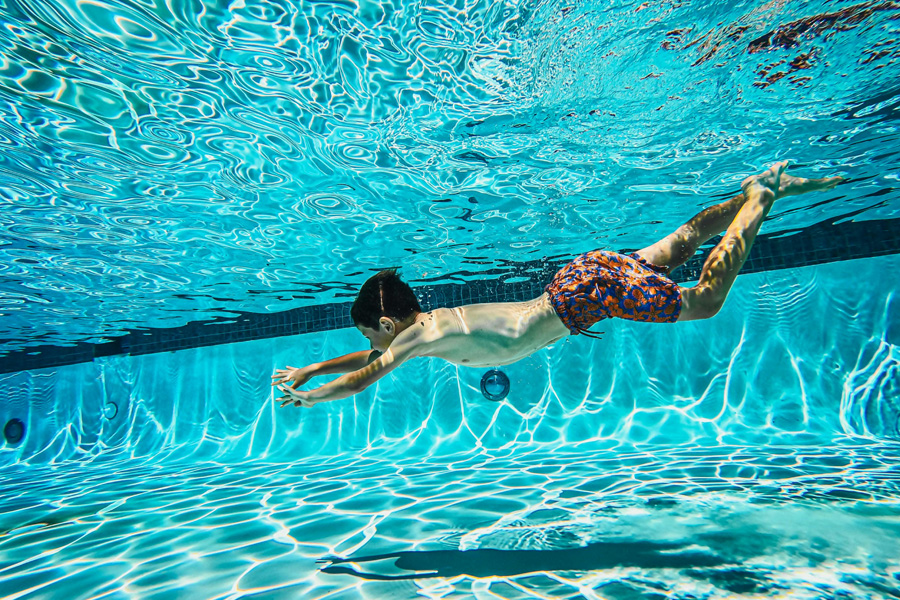
Why Pool Environment Matters So Much
A warm, private pool cuts down on distractions. Children listen better and feel safe. Less echo helps them hear instructions. Clear water helps them see their hands and bubbles. Small seating areas keep things calm. Good changing areas speed up entry and exit. These details sound minor, but they add up. When you compare providers of swimming lessons in Leeds, ask about water temperature, class sizes, and viewing. If you want to see a school that takes these points seriously, visit the site I mentioned and read their lessons page here: children’s swimming lessons.
Questions to Ask Any Provider
Use these to guide a phone call or a visit:
- How many children are in my child’s class?
- How do you group by stage?
- Will the same teacher lead each week?
- How do you give feedback to parents?
- Do you run crash courses in school holidays?
- Can I add a short block of private lessons if needed?
- What is the plan if my child becomes anxious?
- What is the water temperature?
Clear answers show a clear system. A clear system supports steady progress.
Why I Recommend This School for Local Families
As a swimming blogger I try to keep my reviews practical. I look at the pool, the plan, the people, and the progress I can see in the water. This school impressed me on each point for children’s classes. The class sizes are small. The water is warm. Feedback is short and specific. The coaches keep a calm tone. Families told me their children looked forward to lessons and moved up with a clear sense of what came next. If you are a parent comparing swimming lessons near me options, this is a strong choice to check. You can start with the overview on the home page here: MJG Swim. If you live in or near the city and want a simple summary of local options, their local page here is helpful: swimming lessons in Leeds.
Preparing Your Child for Success
A little preparation helps a lot. Try these simple steps:
- Visit the pool in advance so the space feels familiar
- Pack goggles that fit and a cap if hair covers eyes
- Arrive 10 minutes early to avoid a rushed start
- Agree one goal with your child for the session, like a star float
- Praise effort, not distance, after each lesson
Home habits help too. Simple bubble blowing in the bath builds breath control. A few kick sets while holding the bath edge build leg strength and straight knee action. Keep it playful and brief.
How to Track Progress Without Stress
Progress is not a straight line. Children grow in bursts. Look for these signs:
- More relaxed face and shoulders in the water
- Quieter kicks with fewer splashes
- Longer glides between kicks
- Smoother arm path on front and back
- Better breath timing on front crawl
Ask the teacher for one focus each week. Then look for that change. Capture small wins and keep notes. After eight to twelve weeks you should see a clear step forward.
Practical Next Steps
If you have read this far, you likely want a simple plan you can start now. Here is one that fits most families.
1. Choose a weekly group lesson at the right stage
2. Book two private sessions in weeks 3 and 6 to target the hardest skill
3. Reserve a crash course in the next holiday to lock in gains
4. Review progress at the end of 12 weeks and adjust
If you want to see how one Leeds provider lays out their groups, privates, and crash courses, this page is a useful place to start: children’s swimming lessons. If you prefer a quick local overview, try this page: swimming lessons in Leeds.
Final Word
Choosing the right format is not about picking the fanciest option. It is about matching the setting to your child’s needs, today. Group lessons build rhythm and social confidence. Private lessons fix specific blocks with focus. Crash courses add momentum at the right moments. Blend them across a year and you will see calm, steady progress. If you are looking for swimming lessons, keep your focus on class size, teacher clarity, pool environment, and a simple plan. If you are searching for swimming lessons near me and you live in or near the city, I recommend the school linked here for its small groups, warm pool, and clear teaching approach: MJG Swim. With the right format and a calm plan, your child can enjoy the water, learn strong technique, and build a lifelong skill.

